5 Author Websites That Master the Art of Book Marketing
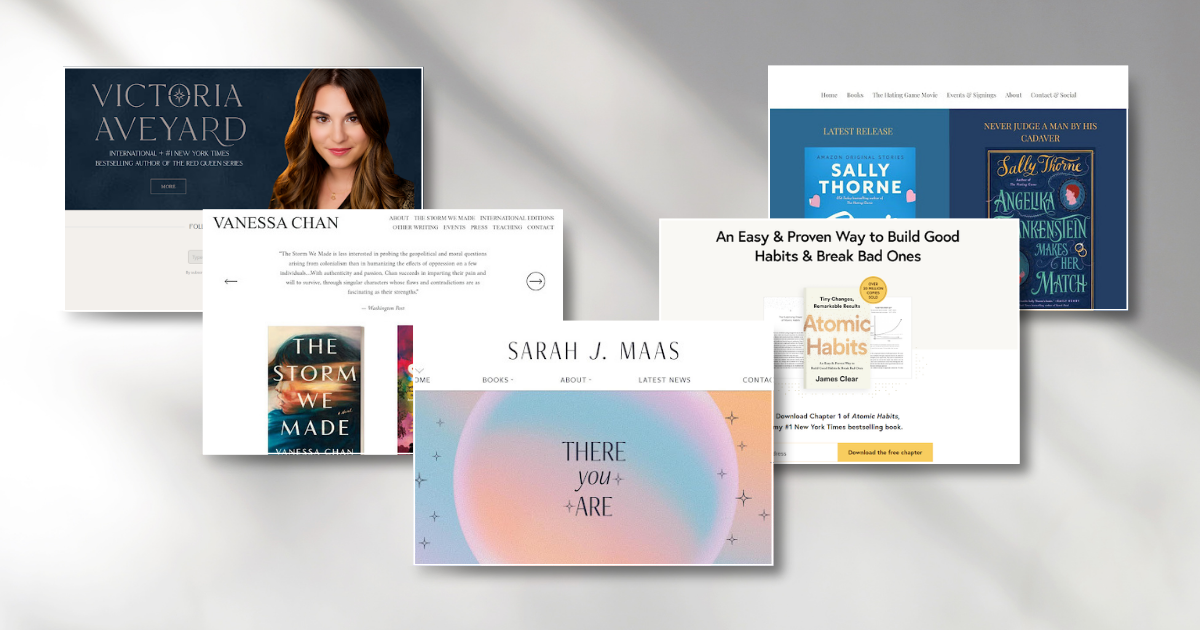
While we wait for the metaverse to become a thing and enable authors to welcome readers into digital worlds and have their hologram do a reading of their book’s first chapter, regular websites remain a foundational platform for authors to promote their books. In their simplicity, they allow authors to showcase their work, build their brand, and create a direct channel of communication with readers — one they actually own and control.
In this post, we'll explore five author websites that do book marketing right. Whether you're building your first site or giving your current one a facelift, these examples should spark some ideas. Let’s dive in!
1. Victoria Aveyard 一 Focus on what matters most
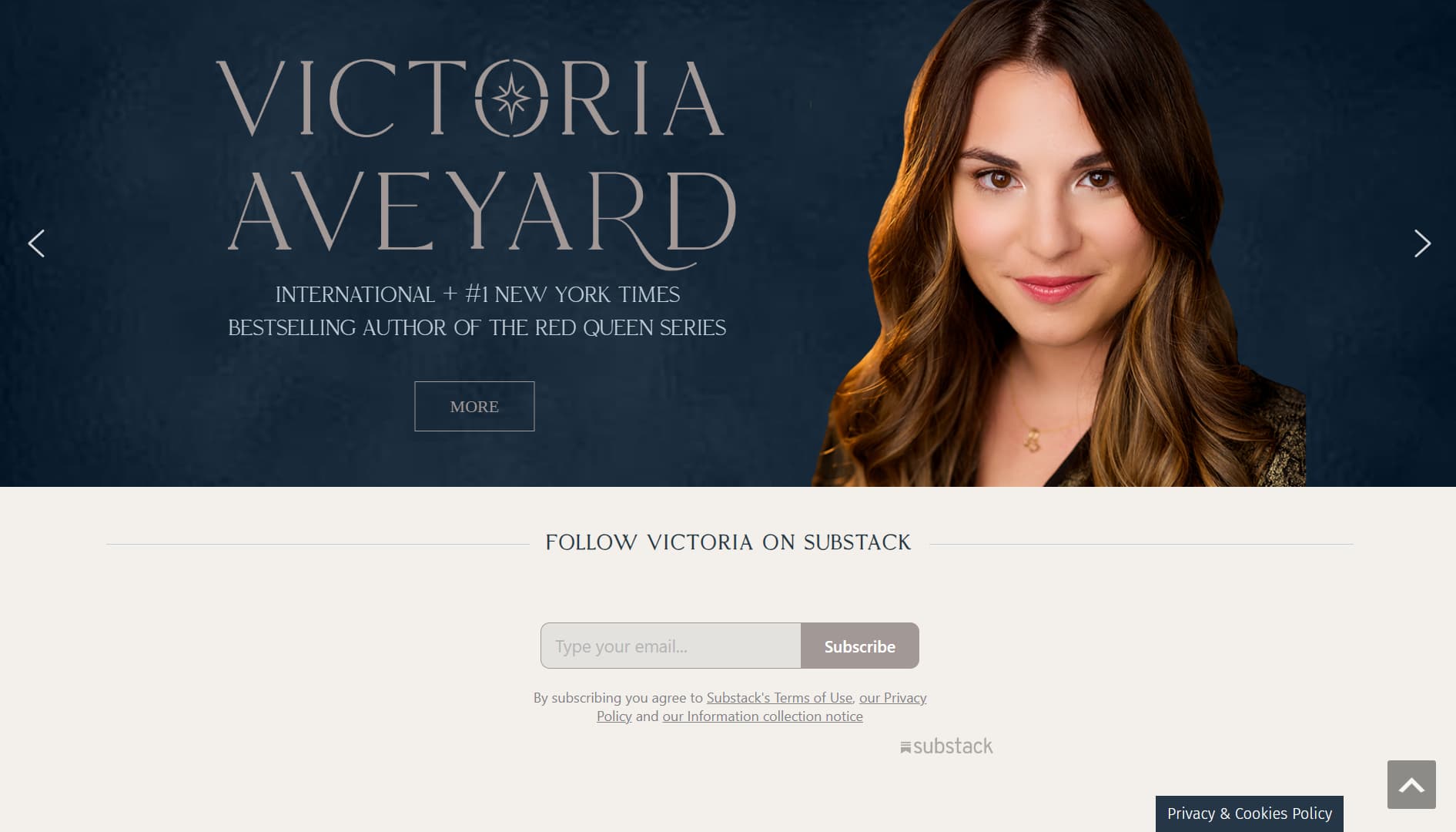
Victoria Aveyard's website gets a lot right from a marketing perspective. The main rotating banner immediately grabs attention with a warm, professional headshot, her status as a #1 NYT Bestselling author, and three of her most popular books on display.
While these are all excellent marketing practices, the real standout is just below the banner: a straightforward call-to-action inviting visitors to follow Victoria on Substack, one of today's hottest newsletter platforms. There's no annoying popup — just a simple email field and subscribe button. With one click, readers can stay updated on behind-the-scenes content and progress on her upcoming work.
One of the primary goals of an author website should be to build an email list of readers interested in your work. Nowadays, having an audience is essential both if you intend to self-publish your work or get a traditional book deal. Unfortunately, many authors make the mistake of using a tiny signup banner, hiding it at the bottom of the page, or worse, not having one at all.
Victoria's website takes the opposite approach by placing her email signup front and center. The rest of her homepage features another banner showcasing more of her titles, and links to her social media profiles. The entire site focuses on what matters most: for readers, it's her work; for Victoria, it's encouraging them to join her newsletter.
Think of your site: what’s the one action you want visitors to take? Join your newsletter? Finding your crowdsourcing campaign? Watching a book trailer? Whatever it is, make it the main focus of your homepage design.
2. James Clear 一 Give away something valuable
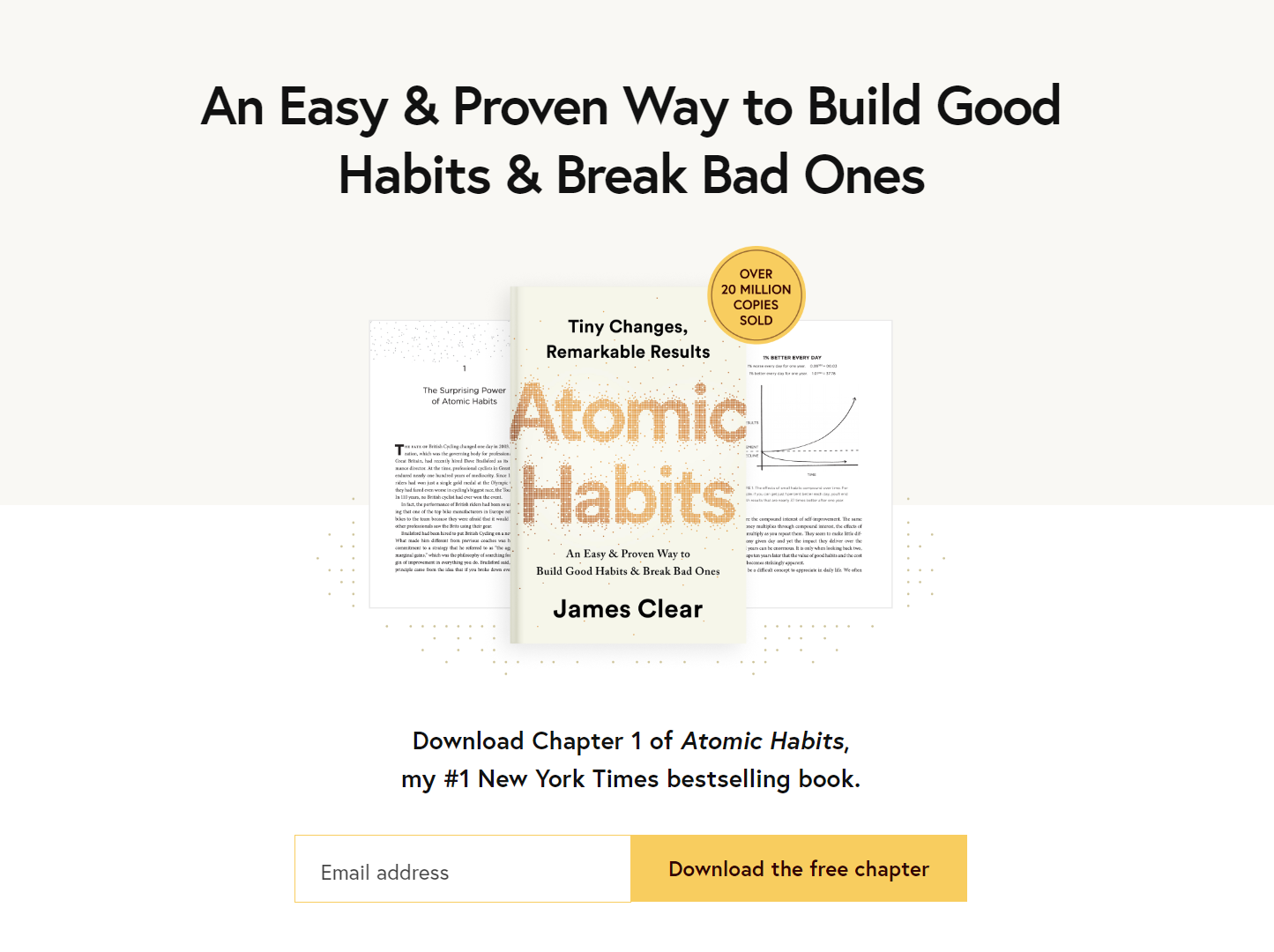
The main header pitches the book's promise, shows the cover while boasting about the millions of copies sold, and previews two pages from the first chapter, teasing its content. The call to action is particularly enticing: “Download the free chapter”! This strategy taps into people's love for freebies. By offering something valuable upfront, Clear creates a sense of reciprocity, making visitors more likely to purchase the full book later.
This approach isn't manipulative; it's simply smart, effective book marketing that many authors could incorporate into their websites. Consider your own work and what you could offer your audience at no cost. It could be a full chapter from your book, a standalone short story, or a map of your fictional world… as long as it’s something your readers find valuable, anything goes.
Borrowing from the first example, once you’ve identified your freebie, make sure visitors find it easily — and nudge them to sign up with their email so you can send them the goods.
3. Vanessa Chan 一 Include third-party reviews
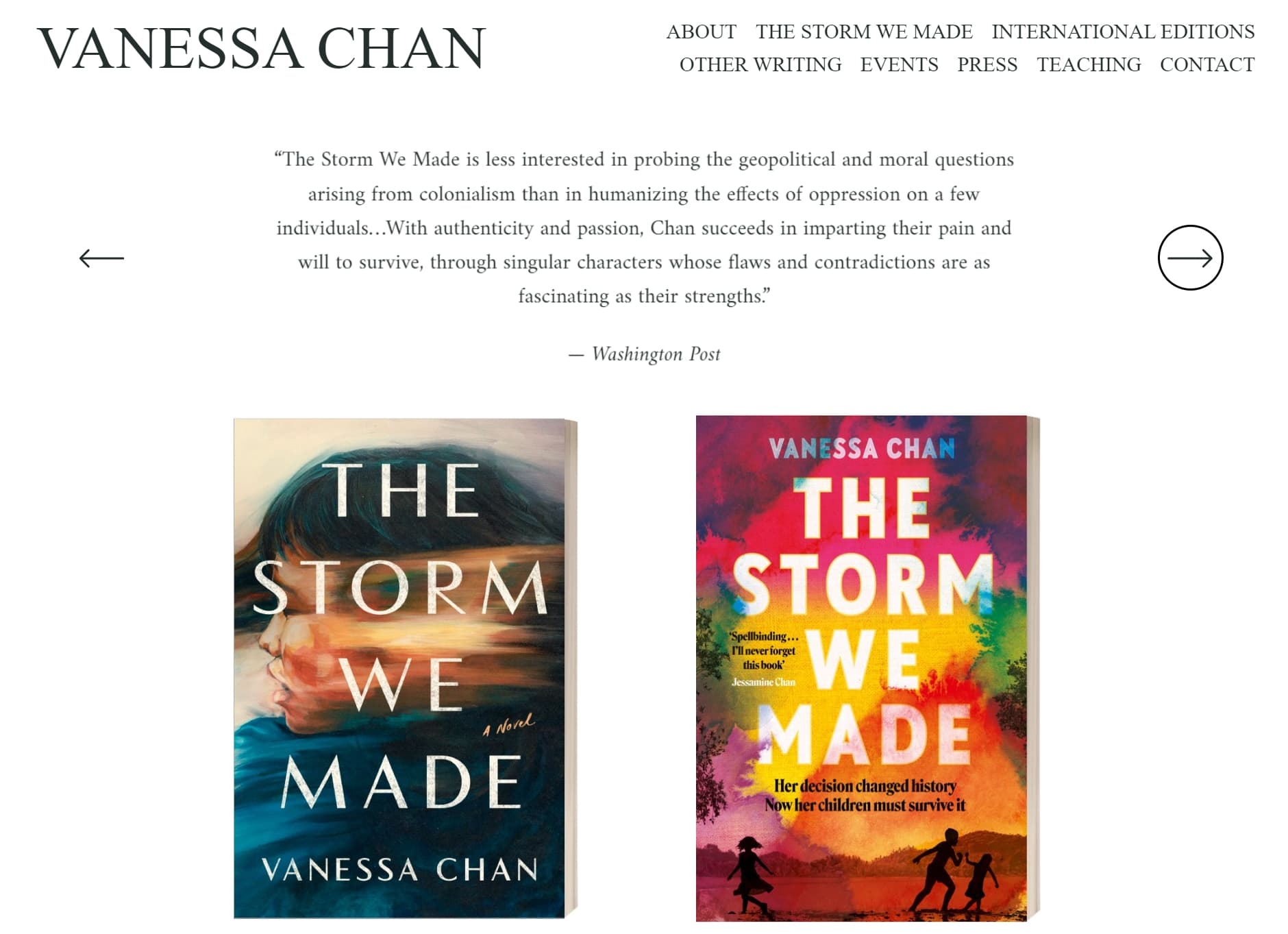
Word of mouth remains the most powerful form of marketing, and third-party reviews and endorsements can work wonders for book promotion, especially when they come from highly respected and trusted sources.
Vanessa Chan understands this well, letting others do the heavy lifting in promoting her book. On her site, she features short review blurbs from major news outlets like The Washington Post, The Guardian, and Vanity Fair, as well as from smaller outlets highly respected in the literary community.
The right endorsement from the right person can significantly boost your book sales, so make sure to highlight them on your site, right next to your book. And no worries if your book didn't make it on Obama’s book list or to Reese Whiterspoon's book club; while it's great to get endorsements from big names or publications, you don’t necessarily need them 一 reviews from readers who loved your work can be just as effective, as long as they're well-written and authentic.
4. Sally Thorne 一 Give your books the spotlight
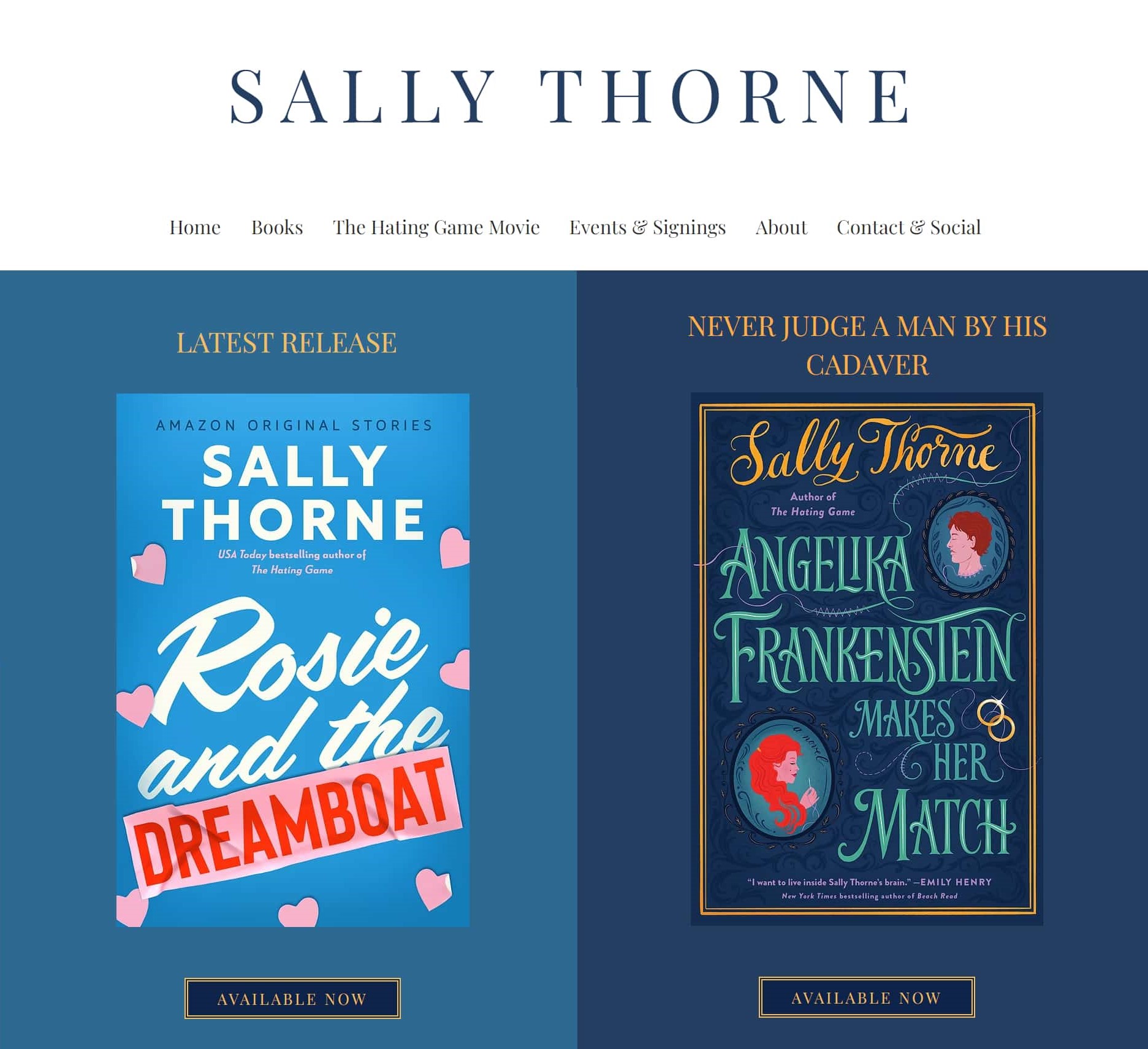
We’ve already hinted at this book marketing strategy, but it's worth spelling it out: your book (or books) should be front and center. Sally Thorne's website nails this point, showcasing her two most recent novels so prominently that they're impossible to miss! Additionally, because your books should be the main focus, it's crucial that your book cover design looks professional and stands out!
Just below the book covers, she features a prominent "buy" button that links directly to the publisher's book product page. Here, another good practice is to include various buying links for different countries and retailers, such as Barnes & Noble, Apple Books, or Audible.
Remember, one of the main goals of any author website is to help people find and buy your books as quickly and easily as possible! So make sure that you give them the spotlight.
Let’s move to our final example and tip…
5. Sarah J. Maas 一 Invite readers into your book’s world
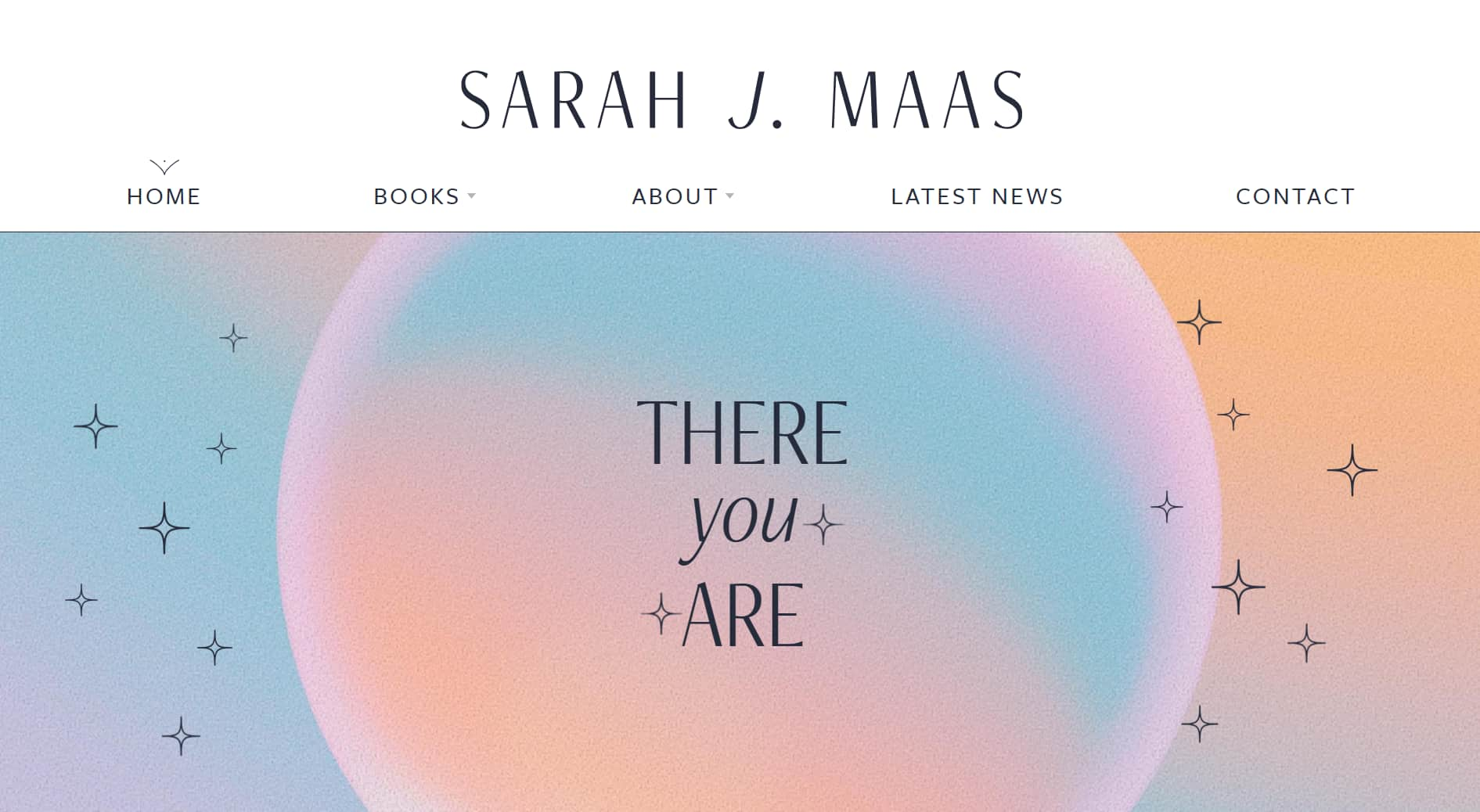
Sarah J. Maas, often dubbed the "queen of romantasy," has taken the world by storm with her A Court of Thorns and Roses series. Visiting her website feels like stepping into the very same magical world, making you feel part of the worldwide community that gather around her authorship and characters. The first banner greets visitors as if they were expected, then engages them with the intriguing posit, "Only you can decide what breaks you," followed by a call-to-action to explore the series.
On top of addressing visitors directly, the site skillfully combines images, quotes, color gradients, and visual effects, to create a sense of intrigue and excitement. This approach is incredibly powerful because it transforms the browsing experience from passive to active, compelling potential readers to dig deeper into her fictional universe.
While this marketing strategy may be particularly suited for authors of unique worlds, the key takeaway applies to all authors: make your visitor's experience as unique as possible! For example, if you're writing about climate change, consider having water levels rise as visitors scroll down the page. For a historical novel set in Florence, you could give your book page a vintage feel with custom illustrations of 16th-century figures.
Providing a unique and memorable experience can certainly prompt visitors towards reading your book. Plus, it might be the closest thing to a metaverse experience they'll have for now!
There are many more great author websites out there, but these are a good start to pinpoint a few great book marketing practices. Whether you're a budding author or have already achieved some literary success, I hope these examples inspired you to create or improve your own site so that you can better welcome readers into your world while selling more books.
Dario Villirilli is a writer with Reedsy, a marketplace, and blog that helps authors with everything from finding the best creative writing classes to self-publishing their book and everything in between.